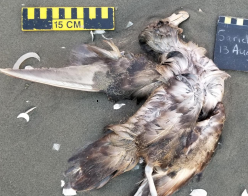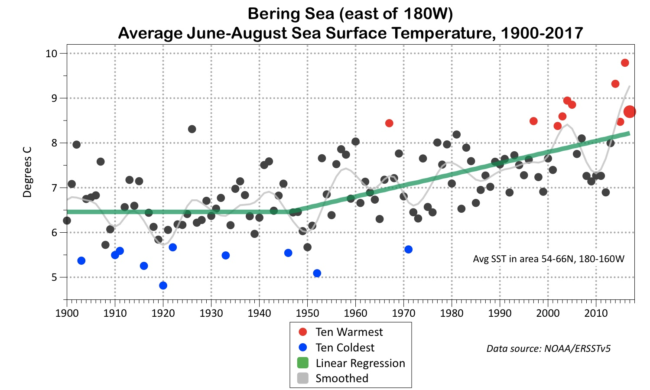For the third year in a row, seabirds are washing up dead along the coastline in Alaska.
Hundreds of birds have been discovered along a stretch of the Bering Sea, on the Pribilof Islands and as far north as Deering.

Julia Parrish, an associate dean at University of Washington, says seabirds have to work really hard just trying to find dinner.
“You’re spending a heck of a lot of your time flying around for food,” she said.
That means the birds have to consume enough fatty fish to sustain themselves. But Parrish says the thin bodies of the dead fulmars and shearwaters washing up on shore suggest the birds are struggling to find enough to eat.
So far, about 800 have been discovered along the coast of the Bering Sea. Parish says early lab results don’t point to disease. It looks like the birds are starving to death.
In 2016, scientists documented the largest seabird die-off in the state in the Gulf of Alaska.
“This is the next step in that progression,” she said.
Parrish says the mortality rate this year isn’t as high. Still, scientists are concerned about the frequency of the die-offs. Before 2014, it wasn’t uncommon to see seabird deaths every three or four years as the ocean ecology shifted.
“Now we’re seeing one to two a year. So that’s a big difference,” she said. “And it just points to more rapid and persistent shifts in the system.”
The Bering Sea has shown a trend of warming for about the past 50 years, according to the National Weather Service in Alaska. Last year was the warmest one on record.

Parrish says that could be affecting the seabirds’ regular feeding spots.
“So if there’s a shift in the system that takes away the prey that you’re used to and replaces it with prey you’re not used to, you may be going to the wrong grocery store,” Parrish said.
But Parrish says that doesn’t mean the seabirds can’t adapt if the warming trend continues. Humpback whales snack on commercial hatchery fish, which is an altered feeding behavior.
She says Alaska seabirds could eventually learn to visit new grocery stores, too.
“So if the system changes majorly and everyone goes to the place they think the food is going to be, and the food is not there? It’s somewhere,” she said. “It’s a bit of an arms race.”
Whether the seabirds can keep up with their changing environment remains to be seen. Scientists are watching closely, as seabird deaths can signal the health of the entire ocean.
